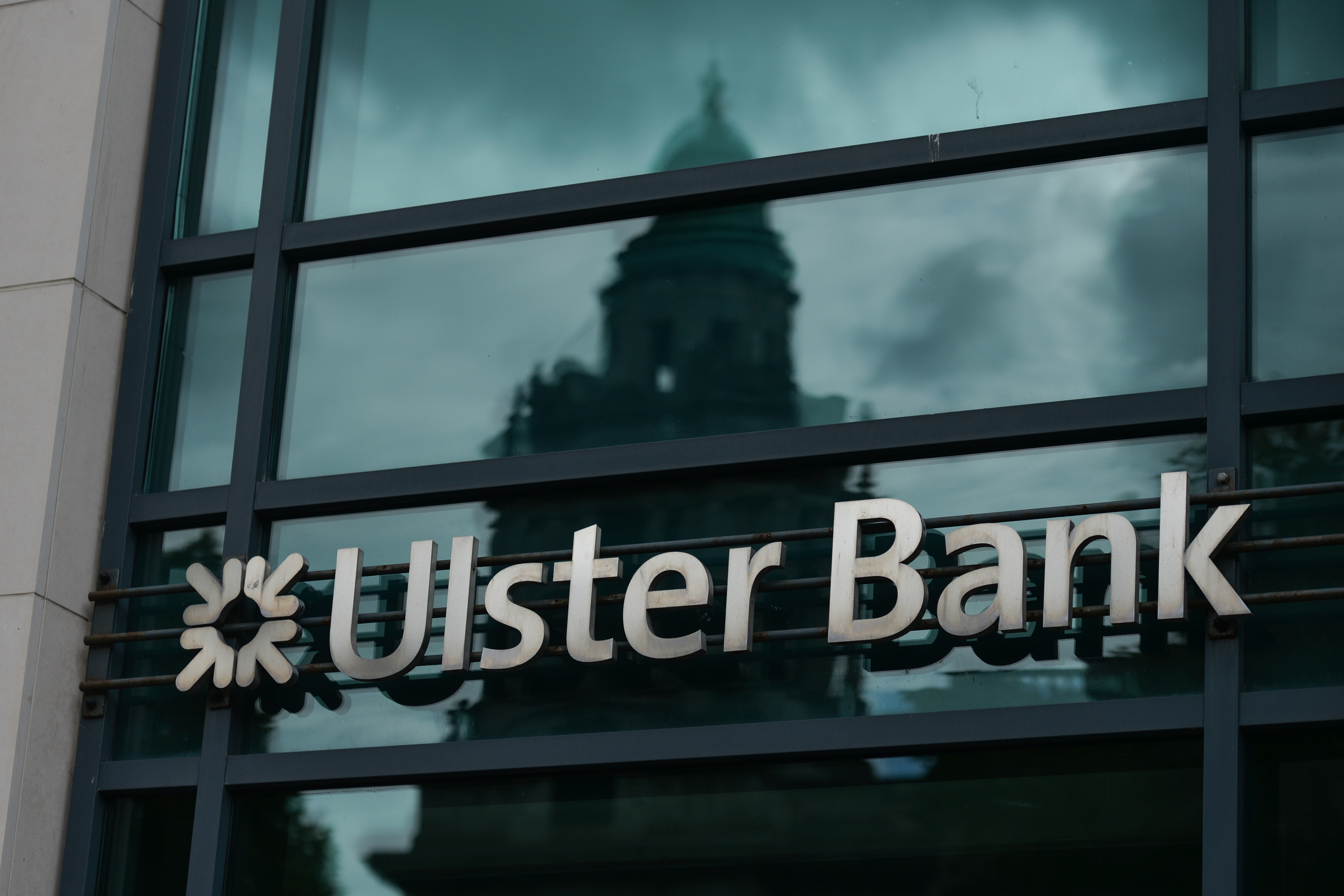Checklist: 10 easy moves to save you money before the end of the 2024/25 tax year
The end of the 2024/25 tax year is fast approaching. We’ve put together an action plan so you can maximise valuable tax breaks and allowances before they disappear on 5 April


Investors and savers don’t have much time left to make the most of valuable tax perks before the end of the 2024/25 tax year.
At midnight on Saturday, 5 April 2025, the current tax year will finish and the new 2025/26 tax year will begin. As it ends, some allowances will be lost forever.
Alex Johnston, wealth planner at Succession Wealth, comments: "As the tax year-end approaches it is important to ensure that your financial affairs are in order so you can take advantage of any remaining reliefs, allowances and exemptions before they are lost."
Subscribe to MoneyWeek
Subscribe to MoneyWeek today and get your first six magazine issues absolutely FREE

Sign up to Money Morning
Don't miss the latest investment and personal finances news, market analysis, plus money-saving tips with our free twice-daily newsletter
Don't miss the latest investment and personal finances news, market analysis, plus money-saving tips with our free twice-daily newsletter
ISAs are one of the most popular ways to shelter cash savings and investments from the taxman. The £20,000 allowance will disappear at the end of this tax year, so it’s wise to move any spare cash that could be taxed into an ISA before 6 April.
Research from Charles Stanley reveals that a quarter (24%) of ISA savers are unaware there is a deadline for their £20,000 allowance.
There is also speculation we could see a lower cash ISA limit unveiled later this year, possibly bringing it down from £20,000 to £4,000.
Rob Morgan, chief investment analyst at Charles Stanley, comments: “There are many savers and investors who don’t know about the ISA deadline. This raises concerns over how many are taking true advantage of their ISA allowance to maximise their savings and build superior compound gains.
“With rumours having also floated that the chancellor could make changes to cash ISA limits, it’s even more important that consumers don’t let their savings sit idly and ignore this year's deadline.”
Meanwhile, it's vital to make the most of tax breaks and do whatever you can to save money due to the arrival of "awful April", which has ushered in a range of price hikes from council tax to water and energy bills.
With this in mind, we've put together a handy checklist to help you maximise tax allowances and grow your money further.
Check out our blog for more money tips for the end of the tax year.
1. Use your ISA allowance
The £20,000 ISA limit is often referred to as a “use it or lose it” allowance. This means you can pay in a maximum of £20,000 across all your ISAs (bar the junior ISA, which has a separate £9,000 limit) each tax year, but you can’t roll over any unused allowances into the next tax year.
The £20,000 allowance applies to cash ISAs, stocks and shares ISAs, lifetime ISAs and innovative finance ISAs.
Putting your money into an ISA means you won’t pay a penny in income tax, dividend tax or capital gains tax (CGT) on any interest, income or profits that you receive. So, it may be worth moving any investments into a stocks and shares ISA, and savings into a cash ISA, to shelter it from the taxman.
Morgan comments: “ISAs have many benefits for savers and investors – they’re tax-efficient, easily accessible, can be used for short and long-term goals, and can also be used as a bridge for retirement savings. They’re the Swiss army knife of financial planning and can be used for nearly everyone’s needs and priorities.”
If you want to open a stocks and shares ISA but aren’t sure where to invest the money, you can always “park” it in a cash fund and decide later.
2. Do a “bed and ISA”
You may not have had to worry about paying tax on investments held outside an ISA in the past, as the capital gains tax and dividend tax-free allowances have more than covered any income or profits.
However, both of these allowances have shrunk recently, so you could be faced with an unexpected tax bill.
The tax-free dividend allowance dropped from £1,000 to £500 this tax year. HMRC estimates more than 1.1 million more people will be brought into paying dividend tax as a result.
Meanwhile, the CGT tax-free allowance is £3,000 (down from £12,300 a couple of years ago).
Shifting investments into an ISA via a process known as a bed and ISA transfer protects future gains and dividends from the clutches of tax.
It involves selling and buying back shares, which could trigger a capital gains tax liability. The CGT rates were hiked last October, in the Autumn Budget, meaning basic-rate taxpayers now pay 18% on gains, while higher and additional-rate taxpayers pay 24%.
So, if you're doing a bed and ISA, beware of realising a gain and paying these higher rates. You could sell some investments now and some in the 2025-26 tax year to take advantage of both tax-free allowances and avoid paying CGT (or reduce a potential bill).
3. Transfer money to your spouse
Any investments transferred to your spouse or civil partner are exempt from capital gains tax. As long as your spouse hasn’t used up their tax-free allowance this year and has some ISA allowance remaining, you can make the most of those tax breaks.
Keep a note of the original cost of the asset, as that’s what will be used when your partner comes to sell it.
The same goes for income-producing investments: your spouse also benefits from a £500 tax-free dividend allowance this tax year, so you can move investments to them to maximise that tax break.
There’s a possible double benefit, too. If your spouse is in a lower income tax bracket, they will pay either dividend or CGT at a lower rate.
4. Get free cash with a Lifetime ISA
Making the most of a Lifetime ISA can be one of the most efficient ways of maximising allowances and bonuses.
The accounts can be opened by those aged under 40. By contributing up to £4,000 each tax year, savers receive a 25% bonus from the government – worth up to £1,000 per year.
This money can either be put towards a first home, as long as the property costs £450,000 or less, or accessed without a penalty charge when you turn 60.
5. Claim the marriage allowance
The marriage allowance applies to couples where one partner does not pay income tax – or their income is below the £12,570 personal allowance – and the other partner pays basic-rate income tax. It could save you up to £252 a year in tax savings.
More than 2.1 million couples currently benefit from the tax break, which allows husbands, wives and civil partners to transfer part of their tax-free personal allowance to their higher-earning partner.
However, HMRC estimates that more than 2 million couples could be missing out on the savings.
In addition to this year’s allowance, couples can backdate their claim by up to four tax years, meaning they could receive an extra lump sum worth up to £1,004 for those years. But you'll need to be quick and apply for the allowance by 5 April.
The non-taxpayer should apply on the HMRC website to access the allowance. If there's a problem doing the online application, you can apply via self-assessment or by writing to HMRC. You can also call 0300 200 3300 for help.
6. Maximise your pensions
You can pay up to £60,000 into your pensions this tax year and receive tax relief. Your annual allowance depends on how much you earn. Paul Clifton, director of wealth management at Arbuthnot Latham, points out that if you're not working and are under 75, "you can still contribute up to £2,880 each tax year, boosted by tax relief to £3,600".
Pension savers can also use carry-forward rules to make large contributions. This allows you to utilise unused allowances from the three previous tax years.
This may be particularly lucrative for small business owners with large cash profits.
If you're a higher-rate or additional-rate taxpayer, don't forget to claim the full amount of pensions tax relief, as you could get an extra 20% or 25% in relief respectively.
The taxman has kept hold of £1.3 billion in unclaimed pension tax relief over the past five years, so it could pay handsomely to check if you can benefit.
As well as being a tax-efficient way to save for retirement, you can also use your pension contributions to reduce your income tax band.
When you contribute to your pension pot, the gross value of the contribution has the effect of extending your basic-rate tax band. This means the rates of CGT and dividend tax you pay could be lower if it means you are no longer a higher-rate taxpayer.
If you’ve only just tipped over into the next tax band, a small pension contribution could bring you under the threshold, leading to a significant saving.
7. Reduce your inheritance tax liability
Several inheritance tax breaks can help you reduce your overall tax liability.
The most well-known is the "annual exemption", allowing you to make a £3,000 gift each tax year. Crucially, this allowance can be carried forward – so, you can make a £6,000 gift should you have the allowance remaining from last year.
As a couple, each person gets the same £3,000 allowance, potentially doubling the IHT reduction you can make.
You are allowed to make gifts of up to £250 to as many people as you like, so long as you haven’t made any larger gift to that person.
Clifton comments: "Using allowances like junior ISAs and making financial gifts can provide financial security for your loved ones and reduce future inheritance tax liabilities.”
8. Help your kids with an ISA or pension
On top of your pension contribution allowances, money can be put aside into someone else’s savings, including your children's. The benefit of this is children are still entitled to tax relief on the contribution, even if they are non-taxpayers.
Investing £3,600 a year, the maximum allowed, on behalf of a child will cost you only £2,880. That's because a top-up of £720 from the taxman is added to your contribution.
While starting a pension for a child may seem odd, it's a useful way to maximise tax savings and help ensure they have a retirement fund for later life. In 2019, 60,000 families opened pension plans for kids, according to HMRC.
Likewise, a junior ISA can act in much the same way, although the youngster will be able to access the pot of money much earlier, from age 18. Parents, relatives and friends can contribute a total of £9,000 into the account each tax year, and any investment gains are tax-free. Like the adult ISA limit, this is a "use it or lose it" allowance: it does not roll over into the next tax year.
Like adult ISAs, there are two types of junior ISA: cash ISAs, and stocks and shares ISAs. If you're considering a stocks and shares junior account but are overwhelmed by the choice, take a look at our guide to selecting which junior ISA is best suited to you.
9. Check your tax code
If your tax code is wrong, you could be paying thousands of pounds of extra tax to the taxman. So, it's important to check your tax code.
The code is normally a mix of letters and numbers; the most common tax code is 1257L.
If you notice you're on the wrong tax code, you can claim back any overpaid tax for the last four tax years. But it's your responsibility to check and let HMRC know if it's wrong.
Sometimes people are on the wrong tax code if they change their job or their salary goes up or down.
If you think you have overpaid tax through PAYE in the current tax year, you should tell HMRC before the end of the tax year. There's more information on gov.uk about how to claim a tax refund.
10. Check your child benefit
Child benefit is paid to parents to help with the costs of childcare. The rate for an eldest or only child is £25.60 a week - while the rate for other children is £16.95 a week. These payments will increase by 1.7% on 7 April, 2025.
But parents must watch out for the high income child benefit charge, as they currently lose part or all of the payments when they earn over £60,000.
Anyone earning between £60,000 and £80,000 has to pay back a portion of the money in the form of extra income tax.
If you earn slightly above £80,000 you may be able to reduce your taxable income and keep more of your child benefit.
For instance, putting money into a workplace pension or using employer salary sacrifice schemes can lower your taxable income without losing money.
Salary sacrifice is an agreement to reduce an employee's cash pay for non-cash benefits, like pension contributions, childcare vouchers or a cycle-to-work scheme.
From this summer, employees liable to pay the high income child benefit charge will be able to do so through PAYE, rather than completing a self-assessment tax return.
Sign up for MoneyWeek's newsletters
Get the latest financial news, insights and expert analysis from our award-winning MoneyWeek team, to help you understand what really matters when it comes to your finances.

Ruth is an award-winning financial journalist with more than 15 years' experience of working on national newspapers, websites and specialist magazines.
She is passionate about helping people feel more confident about their finances. She was previously editor of Times Money Mentor, and prior to that was deputy Money editor at The Sunday Times.
A multi-award winning journalist, Ruth started her career on a pensions magazine at the FT Group, and has also worked at Money Observer and Money Advice Service.
Outside of work, she is a mum to two young children, while also serving as a magistrate and an NHS volunteer.
-
 Half of UK homeowners will need to tap housing wealth to pay for retirement
Half of UK homeowners will need to tap housing wealth to pay for retirementUnlocking property wealth could inject £21 billion each year into UK economy by 2040, according to new research
-
 When will M&S take online orders again?
When will M&S take online orders again?Shoppers have not been able to place orders on the M&S website for more than two weeks, following a cyberattack. Meanwhile, the retailer’s share price has plummeted by 15%. When will things get back to normal?
-
 Act now to bag NatWest-owned Ulster Bank's 5.2% easy access savings account
Act now to bag NatWest-owned Ulster Bank's 5.2% easy access savings accountUlster Bank is offering savers the chance to earn 5.2% on their cash savings, but you need to act fast as easy access rates are falling. We have all the details
-
 Moneybox raises market-leading cash ISA to 5%
Moneybox raises market-leading cash ISA to 5%Savings and investing app MoneyBox has boosted the rate on its cash ISA again, hiking it from 4.75% to 5% making it one of top rates. We have all the details.
-
 October NS&I Premium Bonds winners - check now to see what you won
October NS&I Premium Bonds winners - check now to see what you wonNS&I Premium Bonds holders can check now to see if they have won a prize this month. We explain how to check your premium bonds
-
 Bank of Baroda closes doors to UK retail banking
Bank of Baroda closes doors to UK retail bankingAfter almost 70 years of operating in the UK, one of India’s largest bank is shutting up shop in the UK retail banking market. We explain everything you need to know if you have savings or a current account with Bank of Baroda
-
 How to earn cashback on spending
How to earn cashback on spendingFrom credit cards and current accounts to cashback websites, there are plenty of ways to earn cashback on the money you spend
-
 John Lewis mulls buy now, pay later scheme
John Lewis mulls buy now, pay later schemeThe CEO of John Lewis has said the retailer will consider introducing buy now, pay later initiatives for lower-priced items.
-
 State pension triple lock at risk as cost balloons
State pension triple lock at risk as cost balloonsThe cost of the state pension triple lock could be far higher than expected due to record wage growth. Will the government keep the policy in place in 2024?
-
 Paragon raises rate on one-year fixed cash ISA to 5.75%
Paragon raises rate on one-year fixed cash ISA to 5.75%Paragon Bank ups its one-year fixed cash ISA rate to 5.75% - is it enough to top the table?